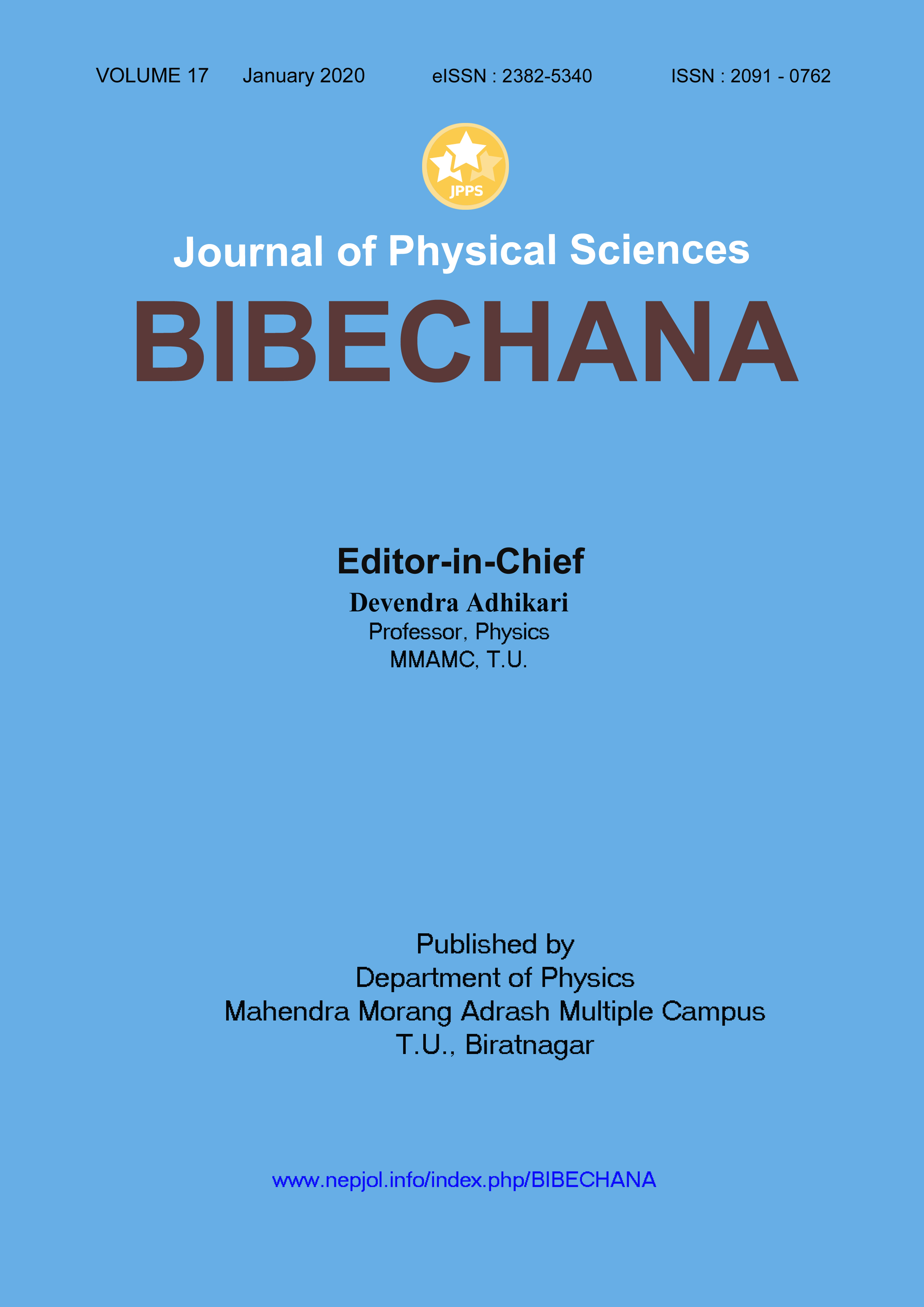The Physicochemical analysis and Phytochemical screening of some medicinal plants of Letang Municipality of Morang district, Nepal
DOI:
https://doi.org/10.3126/bibechana.v17i0.25236Keywords:
Ethnobotany, Phytoscreening, Active chemical compoundsAbstract
Ethnobotany gives the basic idea about the medicinal properties of plants. Identification of active compounds of the medicinal plants and their standardization is essential for the production of new drugs. In the present work, different parts of the five medicinal plants (Curcuma caesia, Costus speciosus, Drymaria cordata, Leea macrophylla, Plumbago zeylanica) were washed, air dried and crushed. Three different extracts of each powdered material were prepared and standard phytochemical analysis procedure was followed for the analysis of physicochemical properties of plants and the identification of active chemical constituents. Among 5 plants, the highest moisture content (14.83%) was found in Plumbago zeylanica, higher total ash (9.22%) and acid insoluble ash (4.43%) were observed in Cucurma caesia. Phytochemical analysis revealed the presence of 12 varieties of bioactive chemicals in the 5 different plants. The plants of the area have great diversity of phytochemicals of numerous medicinal properties. In conclusions, these five important medicinal plants could be useful for the people of the locality to cure several diseases as well as to generate the source of income.
BIBECHANA 17 (2020) 67-74
Downloads
Downloads
Published
How to Cite
Issue
Section
License
This license enables reusers to distribute, remix, adapt, and build upon the material in any medium or format for noncommercial purposes only, and only so long as attribution is given to the creator.




